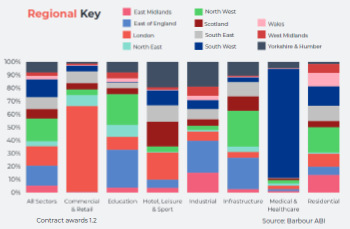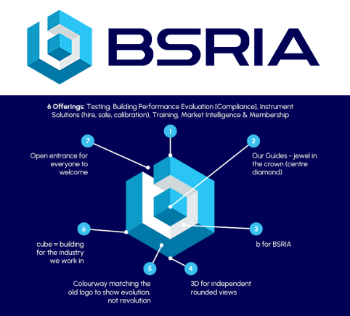Research and development in disaster response

|
Effective collaboration between the private and humanitarian sectors is important in post-disaster response and recovery. It can help to ensure that immediate action is taken efficiently and support the building of local capacity to respond to future disasters. The Working Together for Disaster Relief Conference, which took place on the 8th February 2019 at BRE, explored the best ways for the private sector and humanitarian actors to complement each other’s strengths in disaster response activity to support local communities. Research and development in humanitarian action will continue to support, push, and challenge organisations working in areas affected by disasters, and was therefore one of the key themes of the conference.
“Research and development is often a focus of organisations looking to find innovative ways to tackle issues in the academic, public and private spheres. Key to effective research is in making sure we are asking the right questions, and so working closely with affected local communities and the humanitarian sector is imperative in improving our ability to provide support in disaster situations,” said Charles Parrack, technology subject lead at Oxford Brookes University and facilitator of the R&D breakout session.
Francis Moran, research associate at the University of Bath, said: “As academics we want to see that our research is useful and applicable to real world situations. In our Healthy Housing for the Displaced project, we are looking at tackling the issues of thermal comfort and air quality in situations of prolonged displacement through modelling and real-world testing of potential shelter solutions, which requires the support of field professionals and the private sector to implement our aims. Finding ways for academics, humanitarians and private sector actors to communicate and collaborate more effectively will be vital to continuing to push for better solutions to some of the biggest issues.”
Mott MacDonald, through their Engineering Hope initiative, is working with the University of Bath on the Healthy Housing project and is engaged in various initiatives focused on providing support to humanitarian organisations.
Ana Ruiton, façade engineer at Mott MacDonald, said: “By working with academia and the humanitarian sector we can provide support through our specialist knowledge, technical expertise and unlock innovation in a way that few others can, for good. We are also gaining insights into different ways of working, cross-sector collaboration and addressing issues that ultimately benefit us as much as the beneficiaries of a project. Together we can engineer hope.”
The research and development breakout session at the Working Together for Disaster Relief conference focused on exploring how different sectors can best work together on projects that produce useful results and solutions to the issues affecting humanitarian and development activity. Effective research and development activities can improve the response capacity of disaster-affected communities globally and so ensuring that such undertakings are successful will help to transform the way we respond to, and prepare for, disasters.
This article was written by George Foden, QSAND Support Officer at BRE. It first appeared on the website of BRE Buzz in February 2019.
--BRE Buzz
[edit] Related articles on Designing Buildings Wiki
- BRE Buzz articles.
- BREEAM.
- Building Research Establishment.
- Enhancing community energy resilience, QSAND and Loughborough University Research collaboration.
- Helping achieve the UN's Sustainable Development Goals.
- Helping communities recover from disasters and protecting them before they occur.
- How to rebuild using the debris from disasters.
- Managing and responding to disaster.
- QSAND and the Sustainable Development Goals.
- QSAND application in Nepal.
- Reconstruction following typhoon Haiyan.
- Research and development.
Featured articles and news
Spring Statement 2025 with reactions from industry
Confirming previously announced funding, and welfare changes amid adjusted growth forecast.
Scottish Government responds to Grenfell report
As fund for unsafe cladding assessments is launched.
CLC and BSR process map for HRB approvals
One of the initial outputs of their weekly BSR meetings.
Architects Academy at an insulation manufacturing facility
Programme of technical engagement for aspiring designers.
Building Safety Levy technical consultation response
Details of the planned levy now due in 2026.
Great British Energy install solar on school and NHS sites
200 schools and 200 NHS sites to get solar systems, as first project of the newly formed government initiative.
600 million for 60,000 more skilled construction workers
Announced by Treasury ahead of the Spring Statement.
The restoration of the novelist’s birthplace in Eastwood.
Life Critical Fire Safety External Wall System LCFS EWS
Breaking down what is meant by this now often used term.
PAC report on the Remediation of Dangerous Cladding
Recommendations on workforce, transparency, support, insurance, funding, fraud and mismanagement.
New towns, expanded settlements and housing delivery
Modular inquiry asks if new towns and expanded settlements are an effective means of delivering housing.
Building Engineering Business Survey Q1 2025
Survey shows growth remains flat as skill shortages and volatile pricing persist.
Construction contract awards remain buoyant
Infrastructure up but residential struggles.
Warm Homes Plan and existing energy bill support policies
Breaking down what existing policies are and what they do.
A dynamic brand built for impact stitched into BSRIA’s building fabric.






















